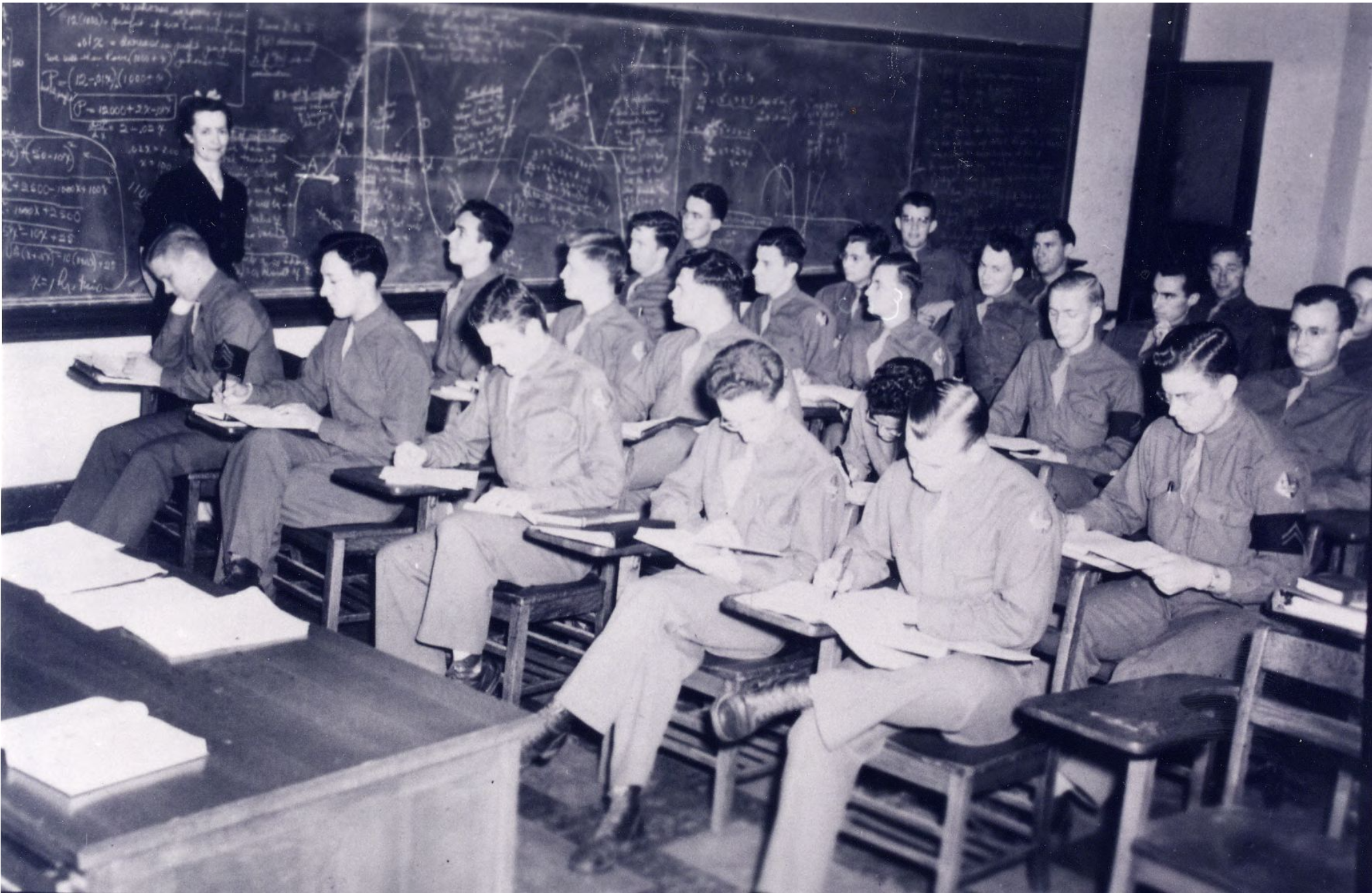The rise and fall of the Army Specialized Training Program
Having skipped a grade in his early education, Stan was still 17 when he started as a freshman at Columbia in the fall of 1941.
So it was during his first term that America's "day of infamy" instantly altered the educational and career plans of every young man in America. At least, all those 20 years of age or older.
While millions enlisted or were drafted during the following year, Stan wouldn't be draft-eligible for several more years. Still, when the opportunity arose to test into a special Army program for technical specialists, Stan took the test in October 1943.
Then Congress revised the Selective Service Act in November 1943, lowering the age of draft eligibility to 18. Now Stan knew he would be entering the service one way or another. Hopefully, he'd be able to finish the school year.
He would have learned in December or January that he had been accepted into the Army Specialist Training Program, in which he would be trained stateside as a technical specialist for a period of time instead of immediately going overseas with a combat unit.
He enlisted and was able to defer his induction until June, after finishing his fourth semester of studies at Columbia. On July 1, 1943, he entered active service in New York and was sent to Fort Hood, Texas, for 13 weeks of basic training.
I'll write another time about what that may have been like. While in Texas, he would have learned of his placement in an ASTP engineering company at Clemson University. He might have been sent to an ASTP unit at any number of land-grant universities around the U.S. It so happened that he went to South Carolina.
He would be going to school in introductory electrical engineering. It was an accelerated course, packing two years of college-level work into nine months of study. The instructors were civilian professors, but the ASTP groups were organized as military units and regular discipline applied.
For Stan, the difference between Columbia and Clemson must have been night and day. The one bright spot was the number of his cohort of students who were smart and interesting people, a good number of them Jewish besides.
This may not be surprising because the ASTPers were selected for intelligence and aptitude. Check out the Wikipedia page for a list of ASTP alumni.
From the records, we know that Stan was in Section EE-52 of the ASTP Fourth Company. EE was for electrical engineering, and they also had mechanical and civil engineering sections, and maybe others.
He became especially good buddies with Dick Diamond, a Jewish chemistry student from Berkeley, who was in Section EE-51. They probably played a good deal of chess in between classes and military drills. Later they shipped out together for the Pacific.
I have letters written to Stan by Dick Diamond from after the war that I will share on the blog sometime in the future.
ASTP classes were on a twelve-week cycle with a week between terms, the basis of the quarterly system that was widely adopted after the war. It was originally expected that soldiers would study for six terms in the program before being assigned to active duty.
But by February 1944, as Stan began his third term at Clemson, the Army decided to scale back the program. It was a luxury to be training specialists for future service when replacement soldiers were needed in the Atlantic and Pacific theaters.
Around the U.S., more than 100,000 ASTP soldiers were reassigned to active service within several months. Most went to Army Ground Forces and were mainly deployed as infantry soldiers in Europe or the Pacific. Any benefit to the Army from the technical education they received was moot.
About a third of the number went to Army Service Forces, the umbrella organization of technical branches including the Army Corps of Engineers and the Army Signal Corps among others.
The Clemson Fourth Company was assigned to the Signal Corps, where at least the mission of the branch was relevant to the education that Stan and Dick Diamond had received. But their specialist training afforded them no special status.
Stan got his rank and assignment like any enlisted signalman. Technician 5th Grade, Fixed-station radio repairman. His orders, after one last leave in early April, were to the Signal Corps training camp near Sacramento, and then a month later shipping out for New Guinea on the USS President Polk.
It was August 1944 when Stan arrived in theater. MacArthur was consolidating victories on the north coast of New Guinea and preparing for a second Philippines campaign. I'll get into that next time.


